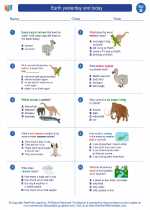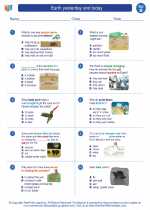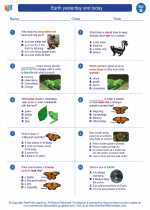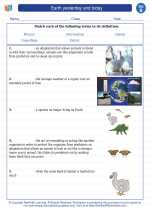Triassic Period
The Triassic Period is the first period of the Mesozoic Era, lasting from approximately 251 million to 201 million years ago. It is a significant period in Earth's history, marked by major geological, climatic, and evolutionary events.
Geological Events
- During the early Triassic, the supercontinent Pangaea began to form, bringing together the Earth's landmasses into a single large landmass.
- Volcanic activity was widespread during this period, leading to the formation of large igneous provinces and contributing to environmental changes.
- The Triassic saw the emergence of the first dinosaurs, as well as the diversification of marine reptiles and early mammals.
Climatic Changes
- During the early Triassic, the Earth experienced a major extinction event known as the Permian-Triassic extinction, which resulted in the loss of approximately 90% of marine species and 70% of terrestrial vertebrate species.
- Following this extinction event, the climate gradually recovered, becoming warmer and more arid during the mid to late Triassic.
Key Study Points
- What major geological events occurred during the Triassic Period?
- How did the climate change during the Triassic Period?
- What were the significant biological developments during the Triassic Period?
- What were the key consequences of the Permian-Triassic extinction event?
[Triassic] Related Worksheets and Study Guides:
.◂Science Worksheets and Study Guides Second Grade. Earth yesterday and today
Study Guide Earth yesterday and today
Earth yesterday and today  Worksheet/Answer key
Worksheet/Answer key Earth yesterday and today
Earth yesterday and today  Worksheet/Answer key
Worksheet/Answer key Earth yesterday and today
Earth yesterday and today  Worksheet/Answer key
Worksheet/Answer key Earth yesterday and today
Earth yesterday and today  Vocabulary/Answer key
Vocabulary/Answer key Earth yesterday and today
Earth yesterday and today 

 Worksheet/Answer key
Worksheet/Answer key
 Worksheet/Answer key
Worksheet/Answer key
 Worksheet/Answer key
Worksheet/Answer key
 Vocabulary/Answer key
Vocabulary/Answer key

The resources above cover the following skills:
LIFE SCIENCE
Ecosystems: Interactions, Energy, and Dynamics
Plan and carry out an investigation, using one variable at a time (e.g., water, light, soil, air), to determine the growth needs of plants.